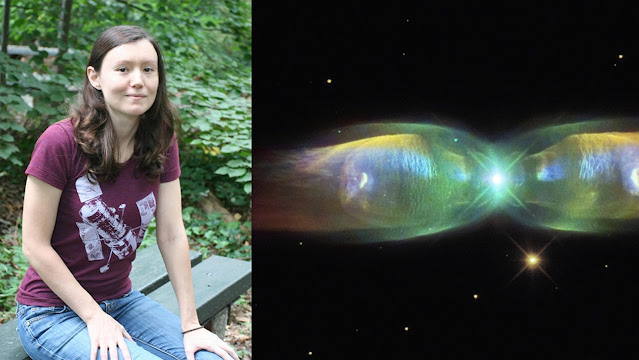The latest photos from the James Webb Space Telescope were again noteworthy. While earlier shots peered deep into space, the newest two featured Jupiter:
See that white spot? This is the Great Red Spot, a storm so big that it could swallow Planet Earth. Why is the color white? That circle reflects a lot of sunlight. This is the usual graphic.
The image also shows two tiny moons, Amalthea and Adrastea.- How many of you know how many moons are circling Jupiter? There are 80, plus other moonlets.
- The largest moons are Io, Europa, Ganymede and Callisto, all discovered by Galileo Galilei in 1610. There is a naming-pattern to these moons: lovers and sexual partners of Roman god Jupiter, or his Greek equivalent Zeus. 23 of them have yet to be named. They should begin to add those of Eros.
- Actually, there are Chinese astronomical records reporting in 356 BC that Gan De detected a moon of Jupiter, probably Ganymede, with the naked eye. Reportedly, he used a tree to "occult" the planet itself, allowing him to distinguish the moon. With Shi Shen, they compiled the first star catalogue, even before those from Babylonia and Greek Hipparchus.
- Ganymede is the largest, the ninth-biggest object in our Solar System. Mercury is #10. To the right, Earth, Moon on top and Ganymede on bottom.
- Ganymede is almost all iron, silicate rock and water.
- There is a suspected internal ocean that may contain more water than Planet Earth.
- Has already been visited by four NASA missions, with the European Space Agency scheduled to send Jupiter Icy Moon Explorer (of course, JUICE) next year.
Data from telescopes like Webb doesn’t arrive on Earth neatly packaged. Instead, it contains information about the brightness of the light on Webb’s detectors. This information arrives at the Space Telescope Science Institute (STScI, Baltimore, Maryland), Webb’s mission and science operations center, as raw data. STScI processes the data into calibrated files for scientific analysis and delivers it to the Mikulski Archive for Space Telescopes for dissemination. Scientists then translate that information into images like these during the course of their research (here’s a podcast about that). While a team at STScI formally processes Webb images for official release, non-professional astronomers known as citizen scientists often dive into the public data archive to retrieve and process images, too.
Citizens help too, and the two images above involved the collaboration of people like Judy Schmidt of Modesto, California. She has had no formal training. Here she is with another her contributions: Minkowski's Butterfly, a planetary nebula in the direction of the constellation Ophiuchus.
Then there are other kinds of image makers. We know some as photographers.
-










Comments
Post a Comment